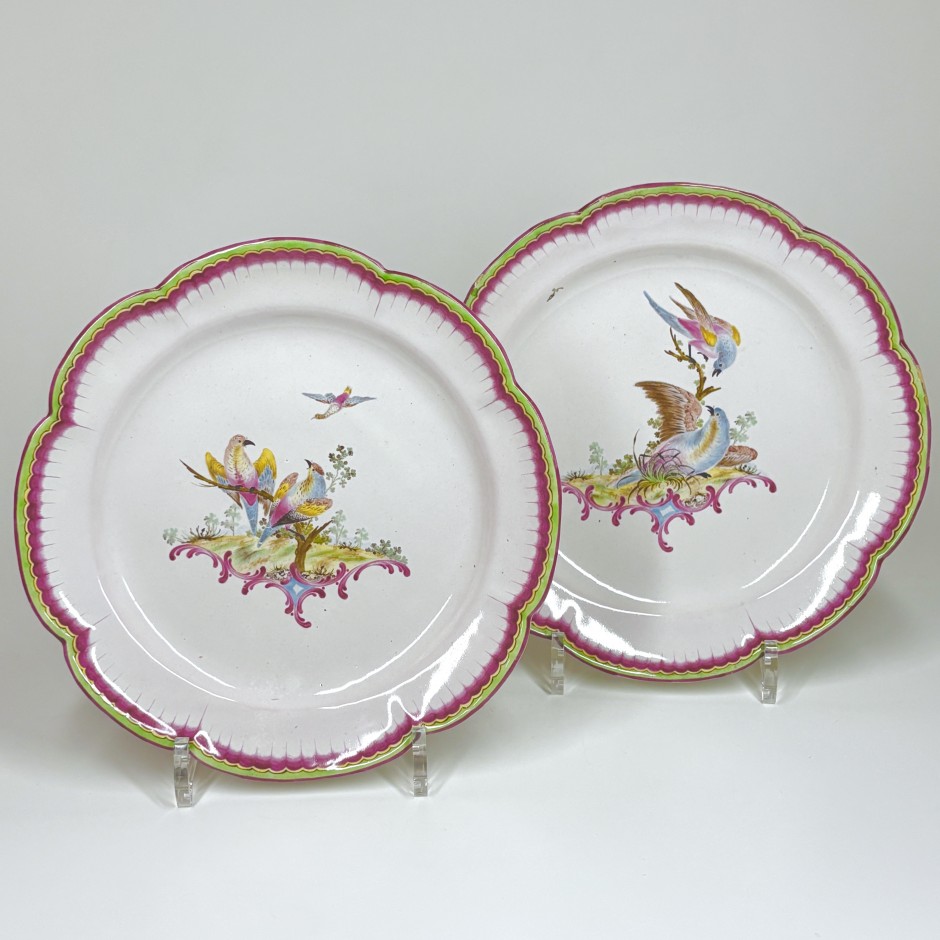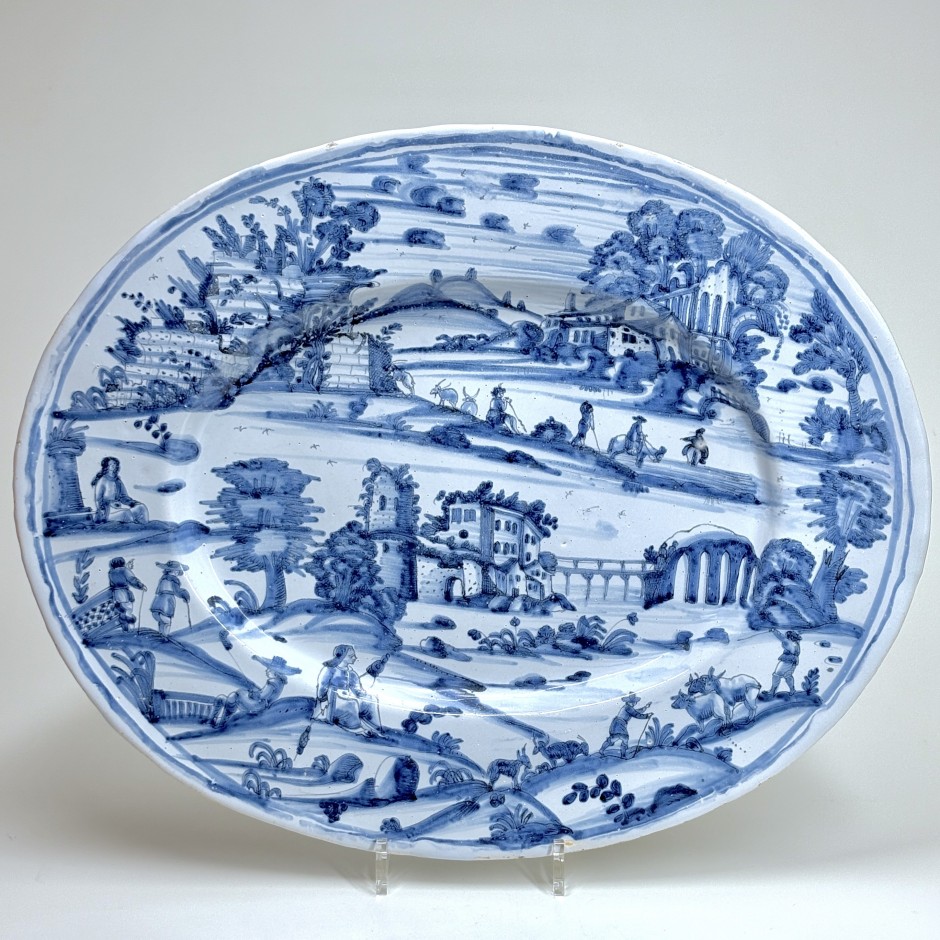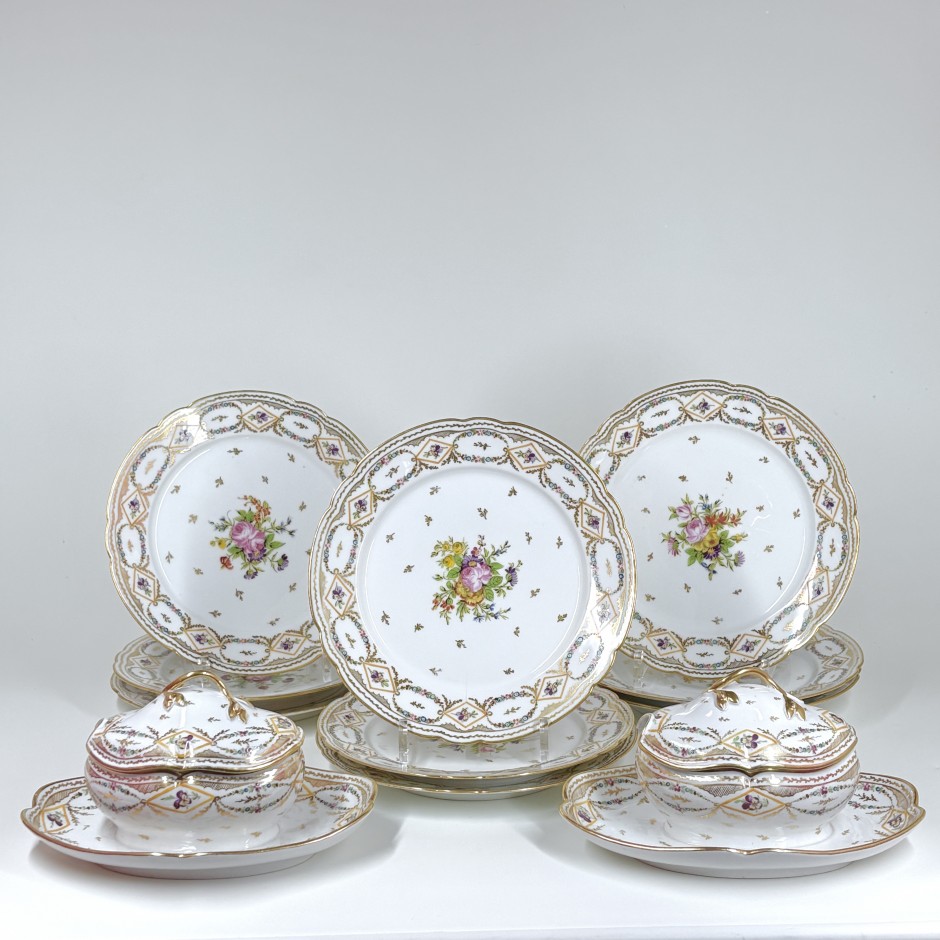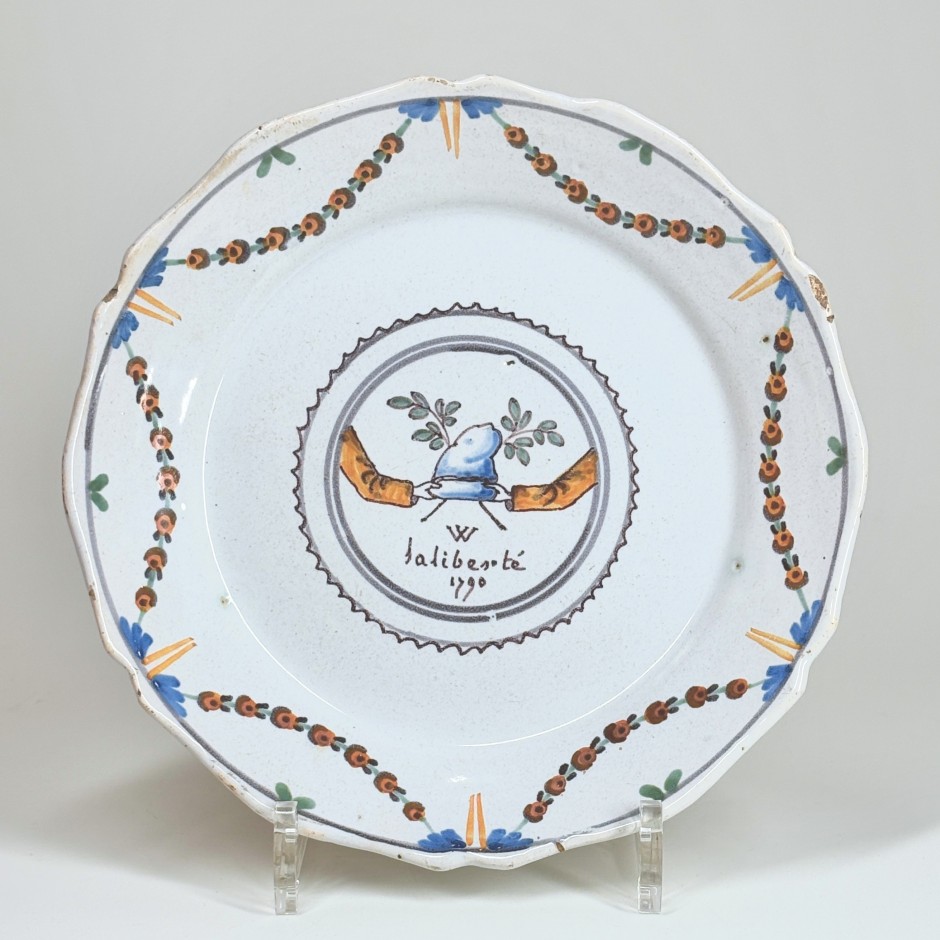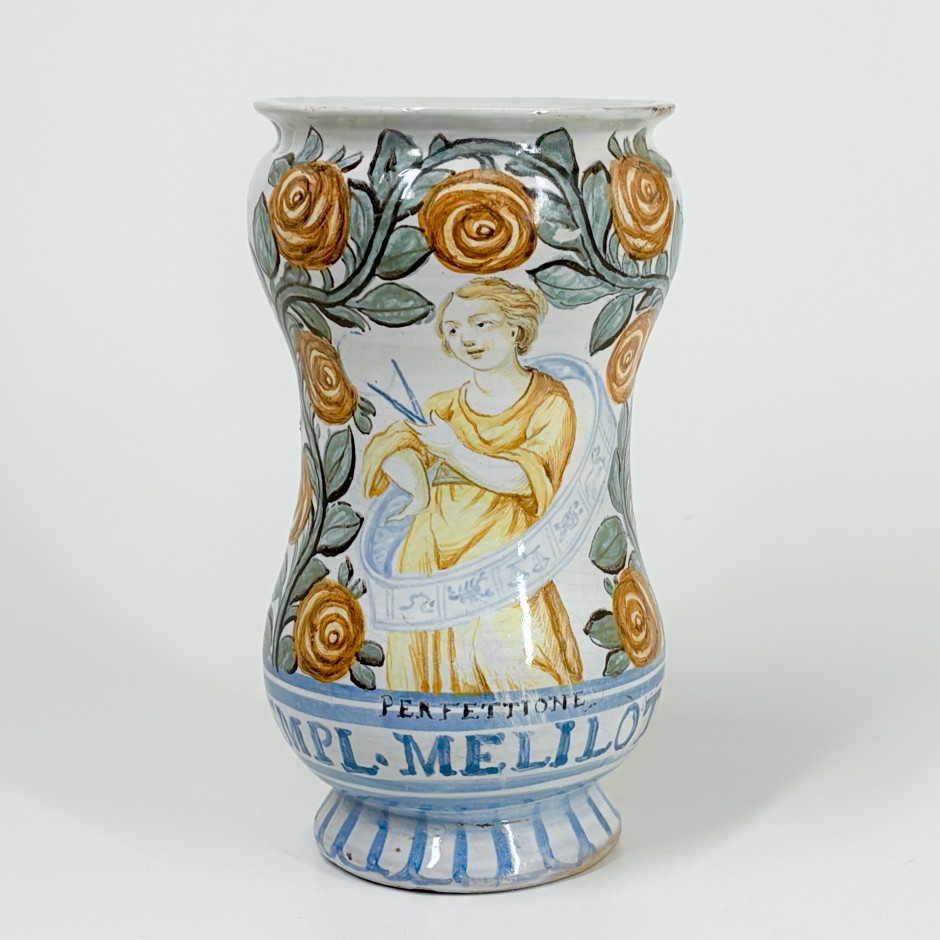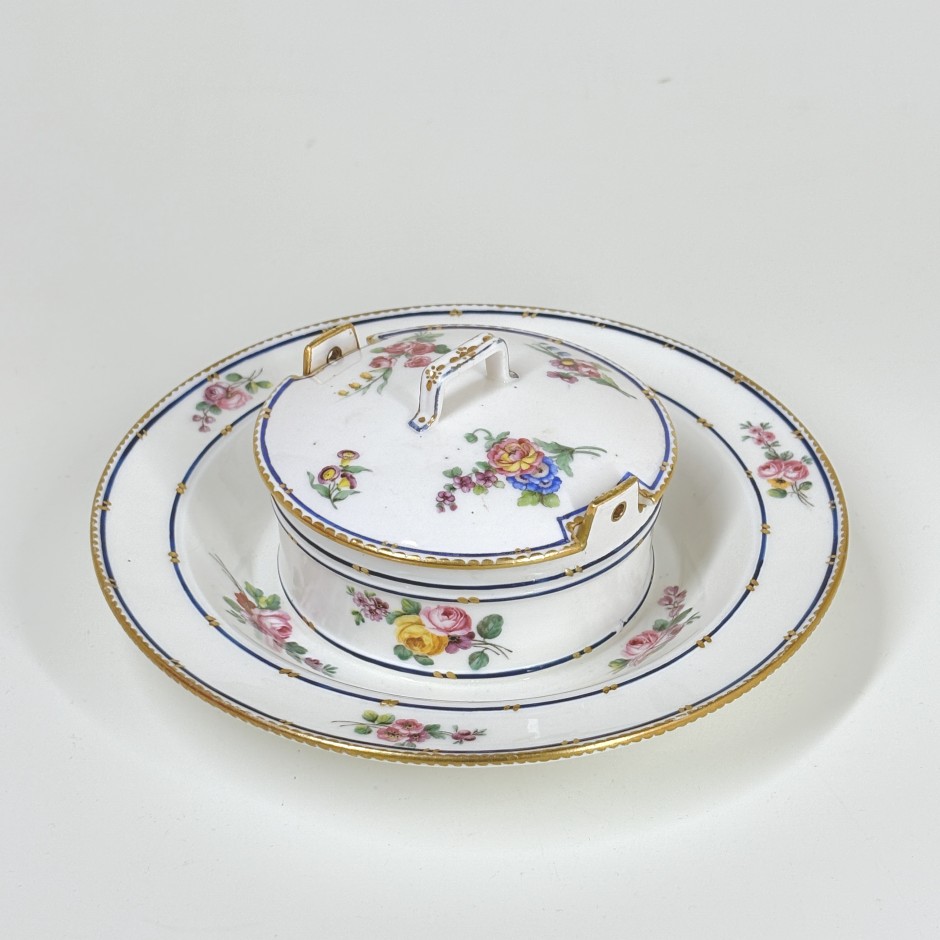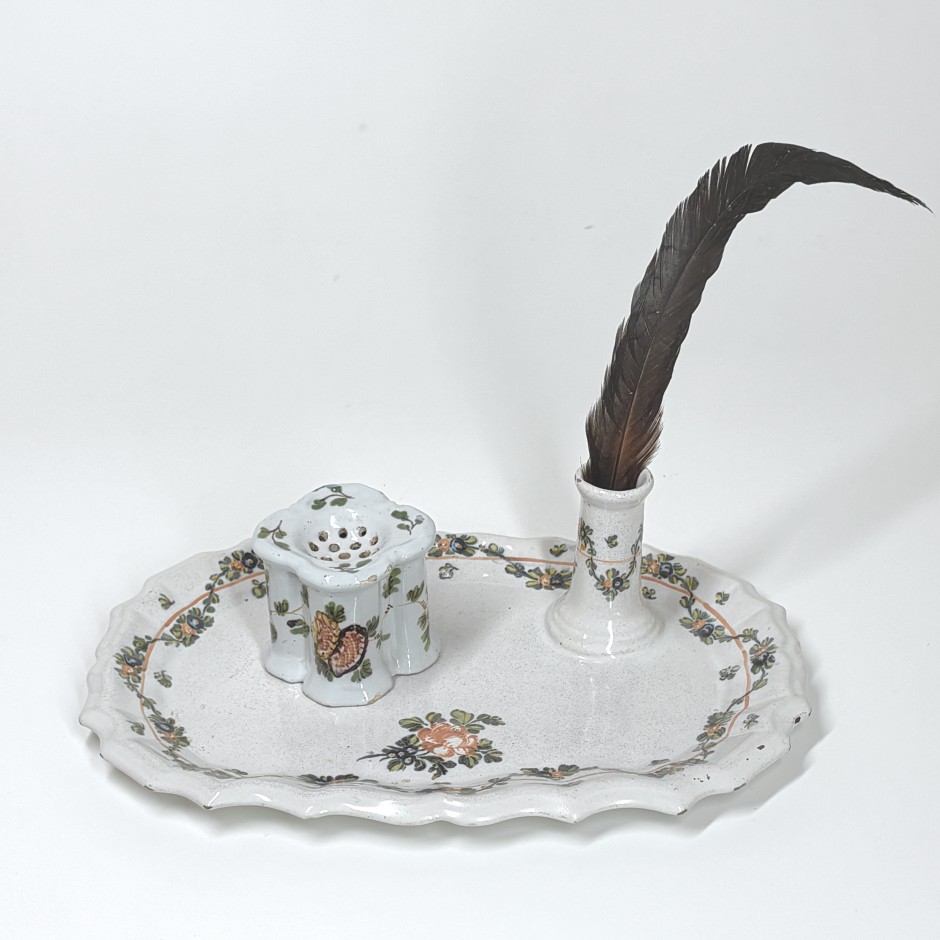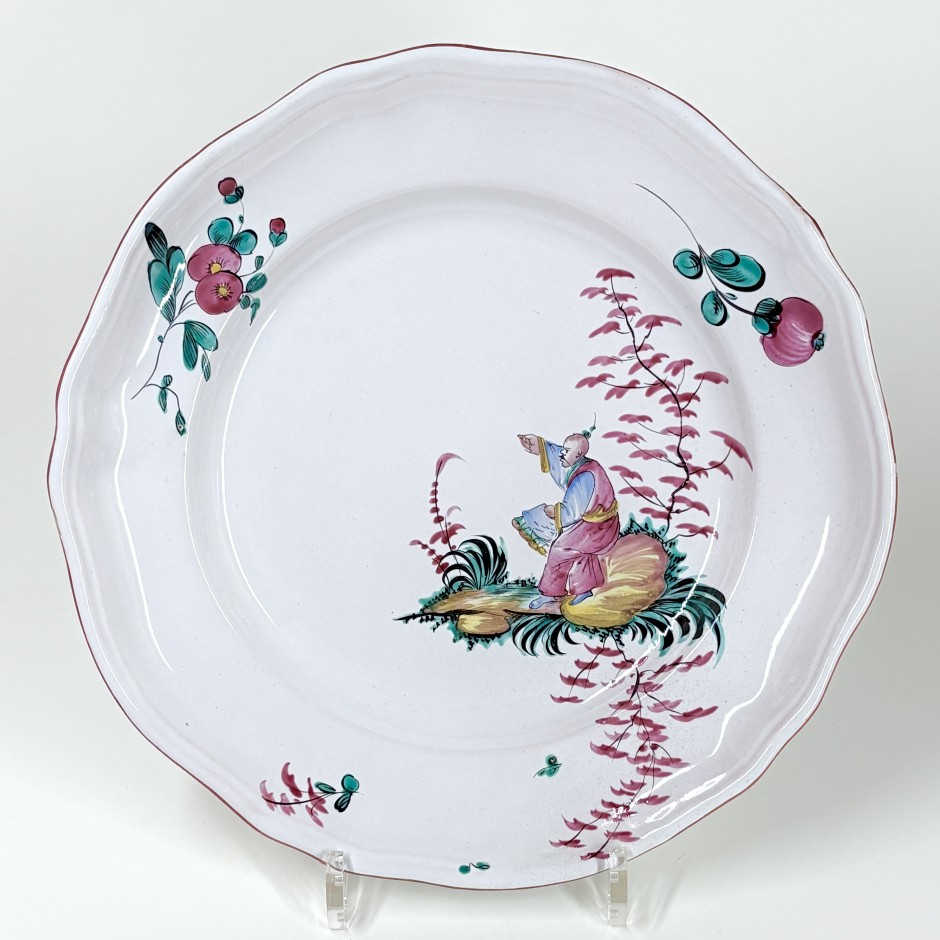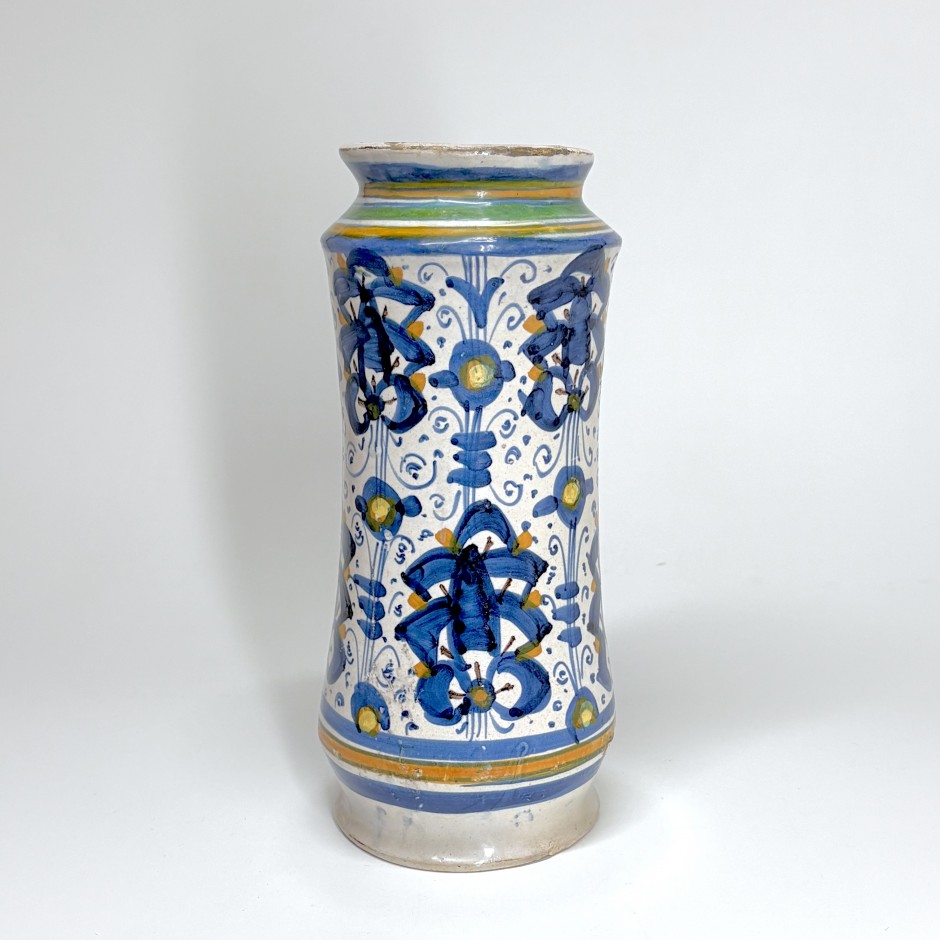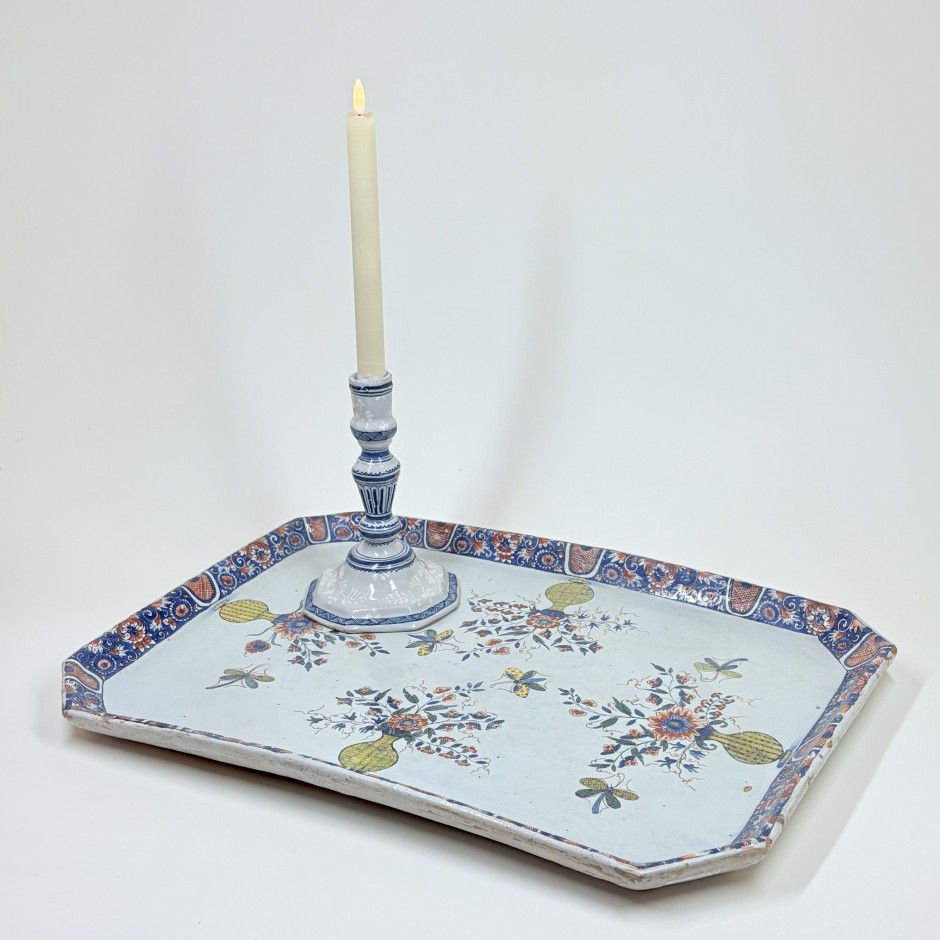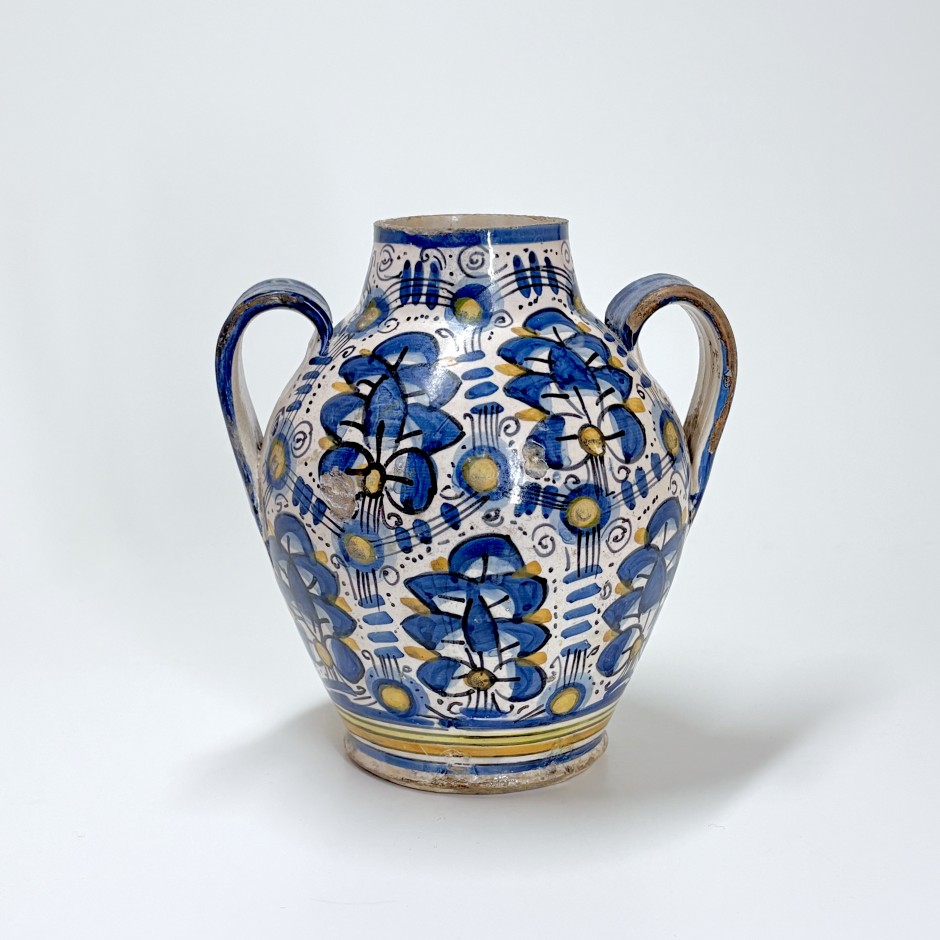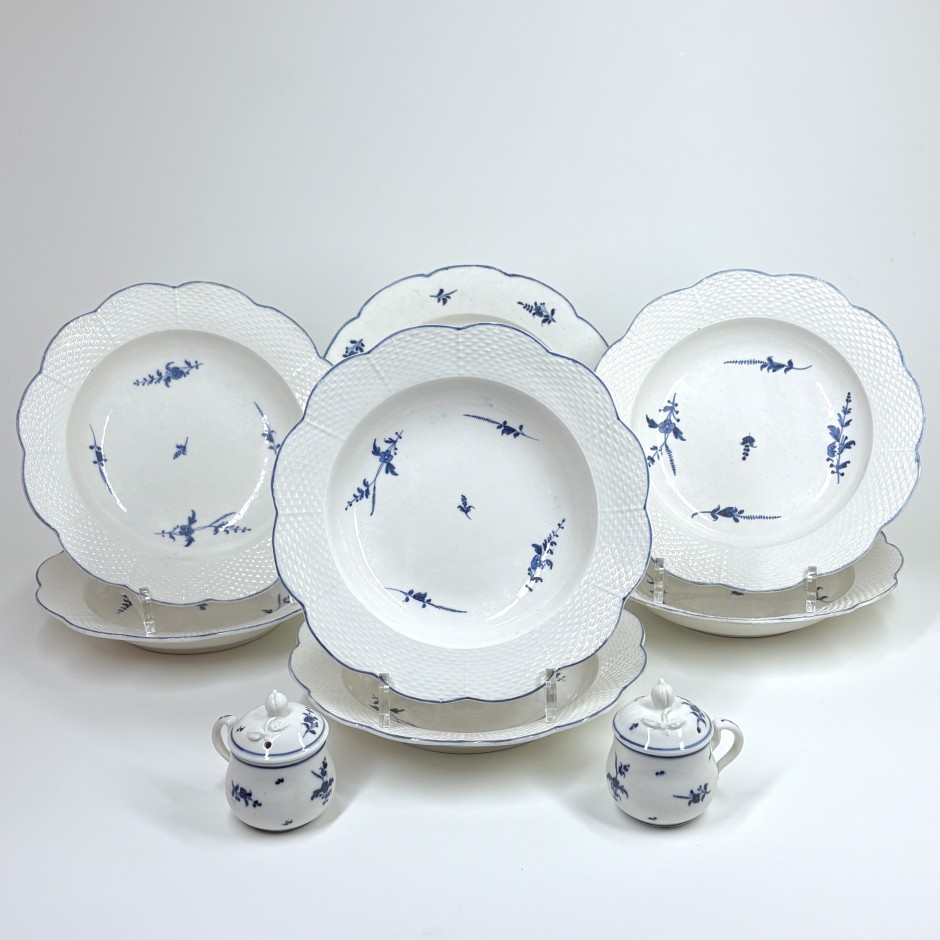New There are 14 products.
Aprey - Pair of Bird Plates - eighteenth Century
Rare pair of earthenware plates with a contoured rim and polychrome decoration of fanciful birds on a base outlined with purple rocaille scrolls, purple combs, and a yellow and green border. Eighteenth Century
2 500,00 €Nevers - Large oval platter in blue monochrome -...
Large oval platter in Nevers earthenware decorated in blue monochrome with animated scenes of numerous figures in the style of L' Astrée. Seventeenth century - Conrade workshop.
2 000,00 €Set of nine Bordeaux porcelain plates and two Paris...
Set of nine plates with contoured edges in Bordeaux porcelain, with polychrome and gold decoration of a bouquet of flowers in the center surrounded by golden twigs and on the wing of garlands of flowers alternating with small yellow diamonds containing a pansy. This set is completed by a pair of sugar bowls with a sticky tray faithfully reproducing the decoration of our plates, these two sugar bowls are in Paris porcelain from the Locré factory - Eighteenth century
3 500,00 €Rare Revolutionary Plate from Nevers - Eighteenth...
Rare Nevers earthenware plate with revolutionary decoration depicting two arms emerging from a medallion holding a Phrygian cap surrounded by branches and the inscription "W la liberté 1790". Eighteenth century. Bibliography: Heitschel Collection. Variant of No. 194 P. 125, with the inscription "Union Liberté 1790" For a similar model, see the "Porcelain and Earthenware from the 17th to the 19th Century" sale on 04/07/2014 by Maître Brice Pescheteau-Badin
1 600,00 €Albarello by Castelli depicting an allegory in the...
Albarello in Castelli majolica, curved shape with polychrome decoration depicting the allegory of perfection in the form of a young woman holding a compass and surrounded by the symbols of the zodiac in a frame of roses, surmounting the inscription "perfettione" and the pharmaceutical inscription "Empl. Melilot." - End of the seventeenth century
1 700,00 €Butter dish in soft porcelain from Sèvres -...
Round covered butter dish on adjoining tray with polychrome decoration of bouquets of flowers, gold wolf teeth and blue lines on the edge. Marked: LL interlaced, letter-date S for 1770. Mark of the painter Tardy Clande-Antoine, flower painter 1757-1795 - Eighteenth century
500,00 €Nove di Bassano earthenware writing case -...
Nove di Bassano earthenware writing case in the shape of a rectangular tray with contours with a pen holder decorated in polychrome with a floral garland accompanied by an hourglass - Eighteenth century
650,00 €Lunéville earthenware dish with Chinese decoration -...
Round Lunéville earthenware dish with contoured edge and polychrome decoration in the center of a Chinese man sitting on a flowery rock holding bells in his hand and on the wing three flowery stems and purple net - Eighteenth century
380,00 €Albarello in Montelupo majolica - Seventeenth century
Beautiful albarello in Montelupo majolica of cylindrical shape decorated in polychrome with motifs called Persian palmettes or stylized "pine cones". fillets on the neck and base - Seventeenth century
1 250,00 €Rouen earthenware cabaret table top - First quarter...
Rare rectangular Rouen earthenware cabaret table top with polychrome decoration of four flower vases and butterflies in the Chinese style and border decorated with blue and red lambrequins. First quarter of the eighteenth century
4 800,00 €Montelupo majolica pharmacy vase - Seventeenth century
Montelupo majolica pharmacy vase with an ovoid shape and two handles, decorated in polychrome with motifs called Persian palmettes or stylized "pine cones". Seventeeth century
1 100,00 €Arras porcelain set - Eighteenth century
Six Arras porcelain plates with a border imitating basketwork, with a blue monochrome decoration called a twig, blue line on the edges. - One Arras porcelain plate with a twig decoration called Mr. de Calonne - Two Arras porcelain juice pots with a twig decoration called a blue monochrome and blue line on the edge - Eighteenth century
700,00 €
